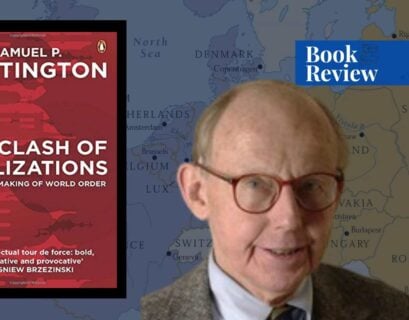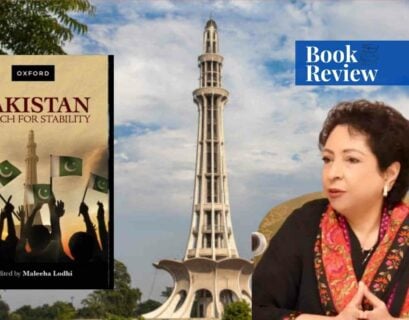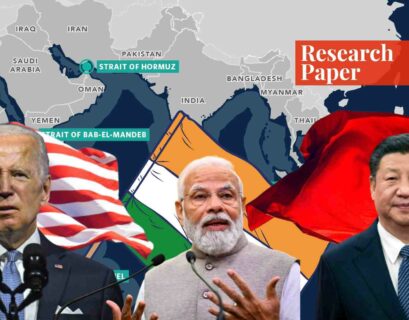Ms Atiqa Tariq is pursuing a bachelor's degree in International Relations from International Islamic University Islamabad.
Introduction
In “Blood and Silk: Power and Conflict in Modern Southeast Asia”, Michael Vatikiotis starts with the mid-1950s, when Southeast Asia became an ideological battleground between traditional elites and forces of modernity allied with communism. Former colonial powers sided with traditional elites because they feared the spread of communism.
Southeast Asian countries faced multiple military coups, and by the mid-1980s authoritarian rule was the norm of the region. All these military regimes in Southeast Asia were either installed or backed by the United States so that they kept communism at bay.
Geography and Economic Growth
Geographically, Southeast Asia is surrounded by warm waters and its coastal areas supported trading centres that allowed the accretion of material and cultural influence both from the East and West. The region was a channel for trade between Indian, Chinese, and Arab traders which created cosmopolitan crucibles in the region. These traders established their communities and made Southeast Asia a diverse region with Islam, Christianity, Hinduism, and Buddhism.
Europeans arrived during the 1500s in Southeast Asia to enrich themselves, exploiting the region and leaving it divided in the mid-twentieth century. By the end of the 20th century, nations of Southeast Asia had achieved remarkable levels of development and admirable stability. Economic sustainability was observed because of the high level of foreign direct investment attracted to Southeast Asia’s relatively open, well-educated, and stable societies.
Vietnam, Malaysia, the Philippines, Indonesia, and Thailand today have a per capita GDP above $3000, placing them in the middle-income category. Despite the remarkable economic growth, there is a startling reality of the gap between the rich and the poor, and this inequality is because economic growth has favoured those who own the capital rather than the labour working for it.
Inequality & Violence
In Indonesia, the economic growth over the past decade has primarily benefited only the richest 20% and left behind the remaining 80% of the population. Thailand’s overall poverty rate has come down from 14% of the population to less than 10% in the past five years but at least 20% of Thais earn over 60% of the income of the country. 25 families in the Philippines own more of the country’s wealth than 75 million Filipinos.
Southeast Asia has always been marked by the shadow of political violence. Ordinary people have been aroused to protest by shallow, empty, and rhetorical promises of a better future, but their hopes are dashed, beaten to a bloody pulp, and left by the side of the road somewhere with no hopes of justice.
There was the army’s violent crackdown on student protesters in Thailand in 1973 and 1976, on popular protests in Myanmar and Cambodia, an outbreak of ethnic and religious violence in Indonesia, and the detention of opposition politicians in Malaysia. Too much of the violence associated with politics in Southeast Asia stems from elite power struggles. Political leaders in Indonesia even justified their anti-communist killings of 1965 saying that the killings were justified to save the country from communism and that no official apology was necessary.
Lacking Governance
One of the fundamental weaknesses of governance in Southeast Asia is the lack of importance attached to the institutions. People in political institutions serve their own selfish interests and because of patronage, people serve the leader of the faction, not the wider interest of the state. Due to the primary ties of patronage and the protection this afforded, the people in Southeast Asia relied on interpersonal networks rather than institutions. When people have problems, they do not call the police but turn to the relationship which has access to the power.
During the 1980s, there were protests across Southeast Asia against corrupt and repressive authoritarian regimes. President Ferdinand Marcos was ousted in the Philippines because of the people’s power revolution. Young Burmese protested against the military in 1988 and got shot down, imprisoned, and tortured. Despite the massacre, the military promised to hold elections in 1990, but that was short-lived considering the new era of military dictatorship in Myanmar.
The 1990s saw the start of an extraordinary boom in economic growth in Southeast Asia, with capital and investment from buoyant liberated Western economies pouring in to capitalize on economic reforms. As the level of investment increased, the concerns about constraints on political freedom diminished.
With the increase in investment in Thailand, the banking sector ballooned and become harder to scrutinize, the stock market became high-rolling casinos, and high-interest rates inflated the price of assets. It all came crashing down on 2 July, 1997 when the Thai Bhat lost half its value against the dollar. As a result, the currencies of the Philippines, Indonesia, and Malaysia also lost their value against the dollar.
Severe economic hardship boiled over in violent anger in Indonesia when Suharto secured re-election in 1998. People felt that their strong leaders no longer fulfilled their social contract promising prosperity in return for limited freedom. As a result, Suharto’s authoritarian regime fell in 1998. In November 1998, the students protested against new emergency powers for the army after the end of Suharto’s dictatorship.
In 2015, Cambodia ranked 150 out of 168 on the corruption index, Thailand sat at 76, Vietnam at 112, and Indonesia at 88. Such high levels of corruption are alarming in the part of the world increasingly at the center of global finance and investment. Corruption scandals affect governments and their leaders, expose them to international prosecution, upsets bilateral relationship that helps balance the contest between China and the United States, impedes political reforms, and encourages kleptocratic leaders to maintain repressive measures to hold on to power.
Corruption is more than a troubling affliction; it is crippling southeast Asia’s progress. In 2015, PM Najib Tun Razak was found to have siphoned public money; $6 billion were transferred from a Singapore bank to the PM’s private bank account in March 2013. In Malaysia, anyone who questioned the PM’s corruption or voiced concern about the scandal was charged with sedition. The roots of corruption lie in the weakness of institutions; police who turn a blind eye to a crime for money, authorities who take bribes to ignore rules, and government officials who demand an extra payment to carry out their duties.
Internal Conflicts
“Blood and Silk” also focuses on internal conflicts in Southeast Asia that have plagued the region ever since its independence. All these internal conflicts are related to an ethnic minority that seek to achieve meaningful autonomy if not independence. Karen, Kachin, and Rakhine Muslims in Myanmar, Muslims Moro in the Philippines, Acehnese in North Sumantra, and Muslim Malay in southern Thailand are all fighting for autonomy.
In Southeast Asia, long-running operations against separatist guerrillas’ armies have served to boost military prestige and justify the need for the army to act as guardians of the state. The least complicated resolution of subnational conflicts is granting sovereignty, but with fear of partition and loss of territory, governments of Southeast Asia retain a strong impulse to impose authority and compel people.
Behind ideals of sovereignty are little more than selfish personal interests; preserving official position or a lucrative source of illegal income, sometimes even justifying the military expenditure. A peaceful solution requires compromise, but a compromise in Southeast Asia is still regarded as a sign of weakness, a loss of face.
The Chinese Threat
Southeast Asia’s accessible geography ensured an abundance of trade but also made the region vulnerable to foreign intrusion and invasion. The first invasion that the Southeast Asians faced was by Europeans followed by Japan in 1941 and are now facing the threat of Chinese invasion. It is difficult to gauge the Chinese threat to Southeast Asia in military terms because China has not actually gone to war with anyone since the 1970s.
After the start of the Cold War in the 1950s, China started to present a threat to Southeast Asian security. Communist insurgencies across Southeast Asia received ideological and material support from China. When China ceased supporting communist insurgencies, it began asserting sovereignty over islands and features in the South China Sea in the 1980s.
China’s economy began to grow after its free market reform in 1978. Opportunity to invest in and trade with China has been a considerable driver of growth and prosperity for Southeast Asia, with trade now valued at $500 billion between 10 countries of ASEAN, making ASEAN the largest trading partner of China. China’s focus is on building infrastructure, roads, railways, and seaports because it intends to develop sources of cheap power and reliable overland routes from China through Southeast Asia to the sea, so that it does not solely rely on the Malacca Strait.
Under Jinping’s leadership, China has been flexing its muscles, no longer hiding its strength or sheathing its power. After decades of struggle for democracy, Southeast Asia is finally on the path to democracy, but all this free government is jeopardized by the laziness of politicians. Leaders are willing to challenge legal and institutional safeguards of ethnic and religious communities for short-term political gains. Unfortunately, the legacy of colonial-engineered ethnic pluralism has proven an obstacle to effective nation-building, holding up democratic progress.
If you want to submit your articles, research papers, and book reviews, please check the Submissions page.
The views and opinions expressed in this article/paper are the author’s own and do not necessarily reflect the editorial position of Paradigm Shift.



















